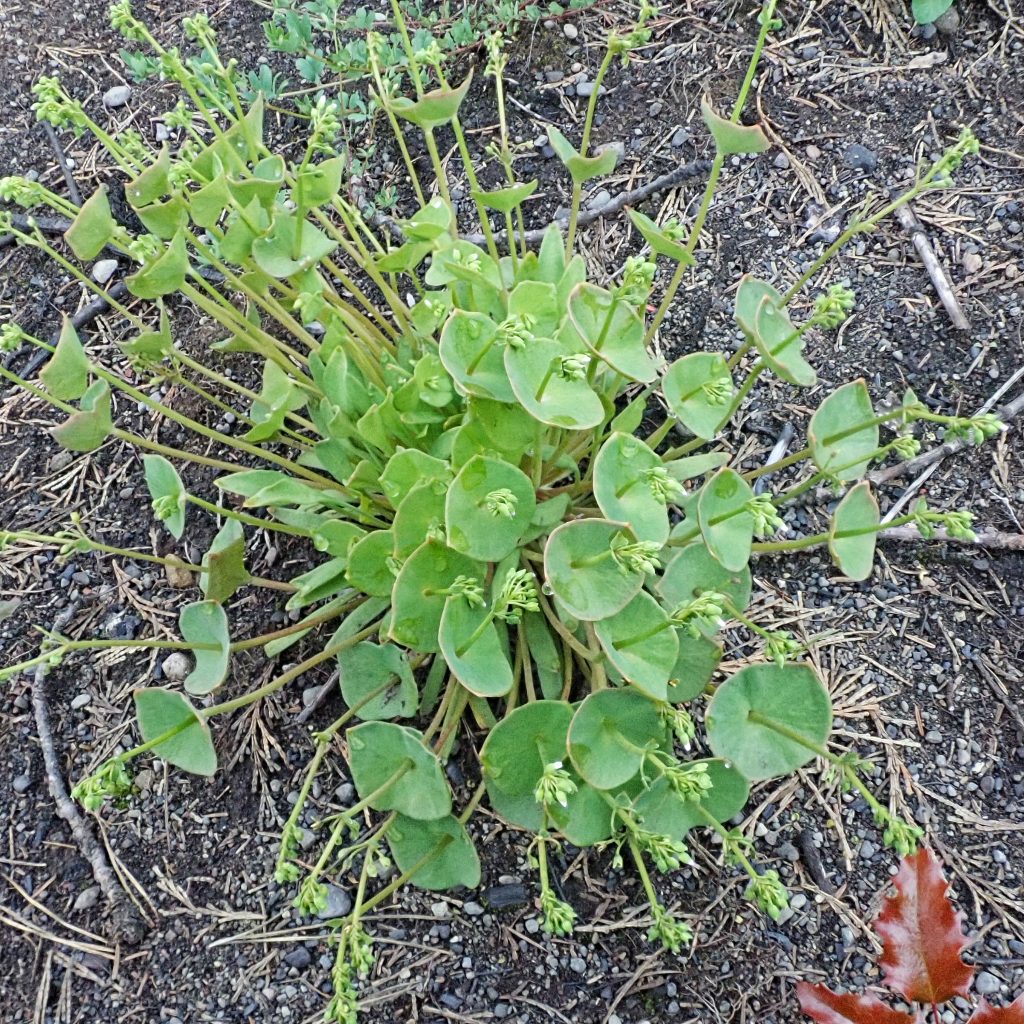
Because they are all members of the Claytonia perfoliata polyploidy pillar complex, I am writing linked posts about C. parviflora, C. rubra, and C. perfoliata, and information common to all three can be found in the post about C. perfoliata. I was fortunate enough to find each one of these species side by side with one of it’s kind, so I have direct comparison photos in each profile.
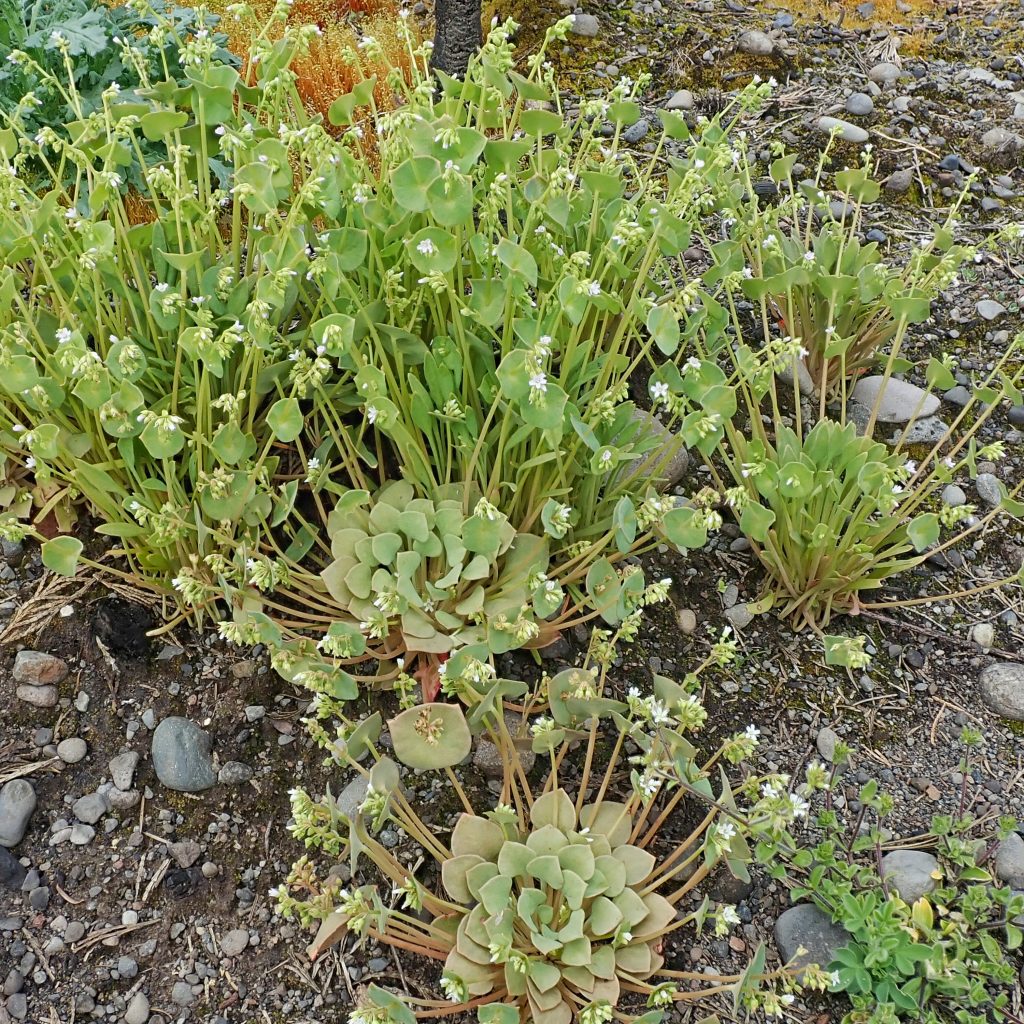
Hopefully this will help clarify identification of our superficially similar Claytonia with fused cauline (stem) leaves. The first thing to look for is the size and shape of the basal leaves (there is a good, if overly simplified, glossary of leaf shapes here). In C. perfoliata they are fairly large (10-70mm long by 5-60mm wide), rhombic to deltoid or reniform, with a pointed tip. The basal leaves of C. rubra are small (5-15 mm long by 5-10mm wide) and ovate to spatulate or trullate, with an obtuse apex. And the basal leaves of C. parviflora are long and narrow (up to 6” long by 5-10mm wide) and linear to mildly spatulate in shape.
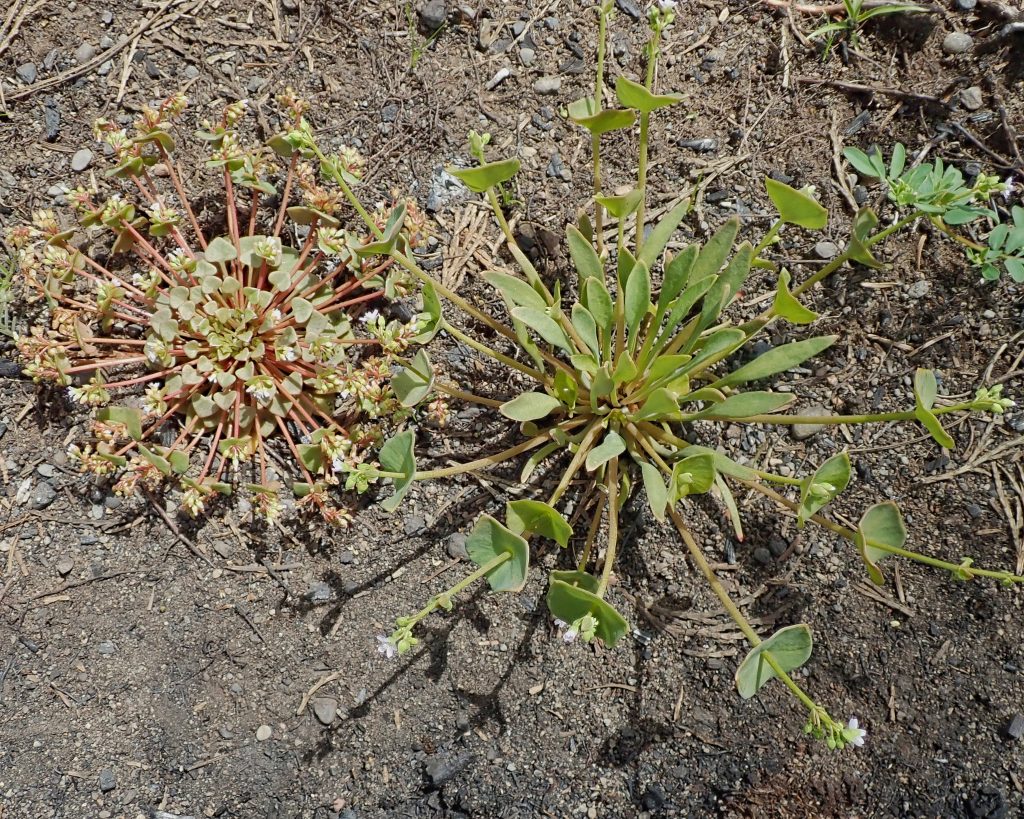
Young plants of C. perfoliata can be confused with C. parviflora, because they occasionally have linear basal leaves. But usually by the time they are flowering the leaves of C. perfoliata are at least spatulate, though some C. parviflora end up with somewhat spatulate basal leaves. Most of the time the inflorescence of C. parviflora is elevated on a stalk above the fused leaves, and C. perfoliata usually has a very short inflorescence. But exceptions abound. Sometimes the two species really can’t be separated with certainty without dissecting the flower and/or seeds.
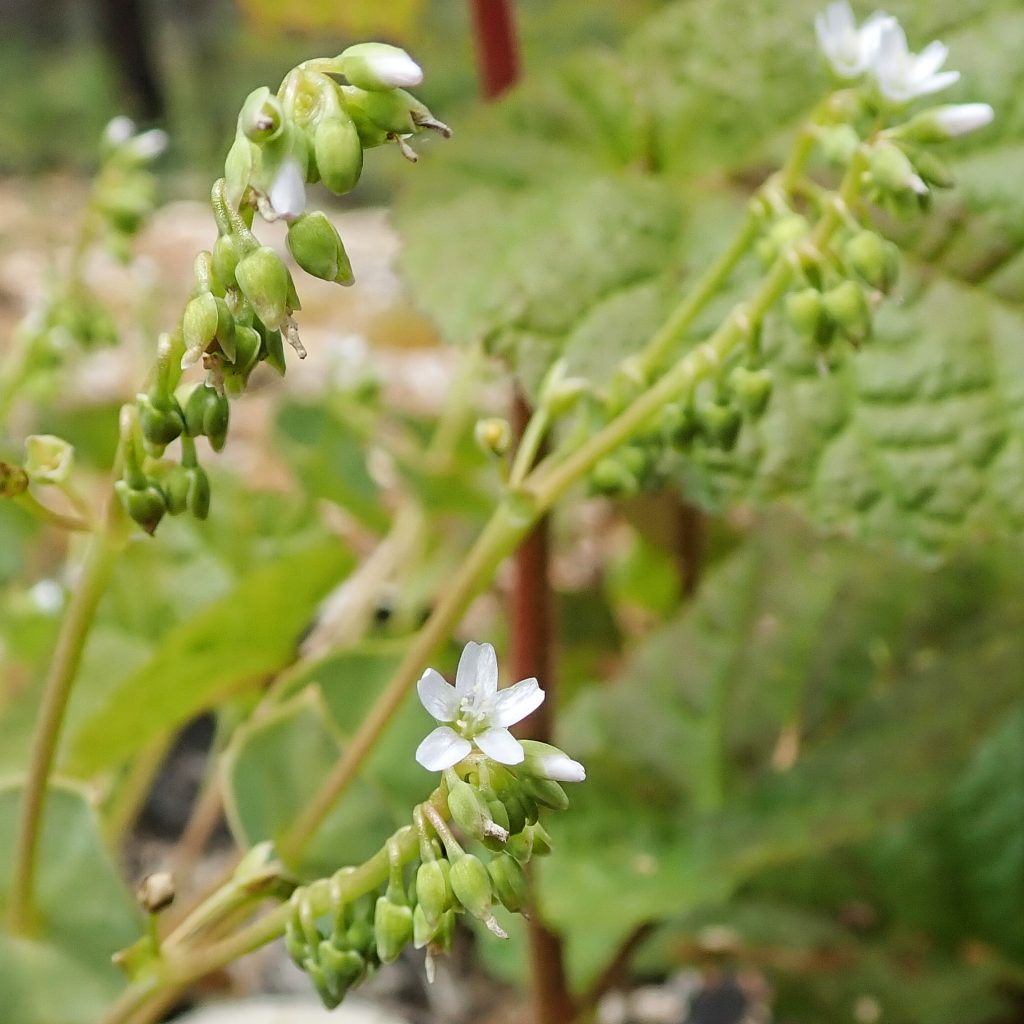
Description– Grows in clumps from a basal rosette of erect, linear leaves; single pair of opposite, usually fused, stem leaves; inflorescence long (sometimes short when just emerging), and appears to grow straight from the leaf; flowers small, light pink to white; annual.
Similar species-See C. perfoliata and C. rubra
Habitat-Moist forest edges and disturbed ground.
Range-Western North America; region wide except for the highest elevations and the most arid interior.
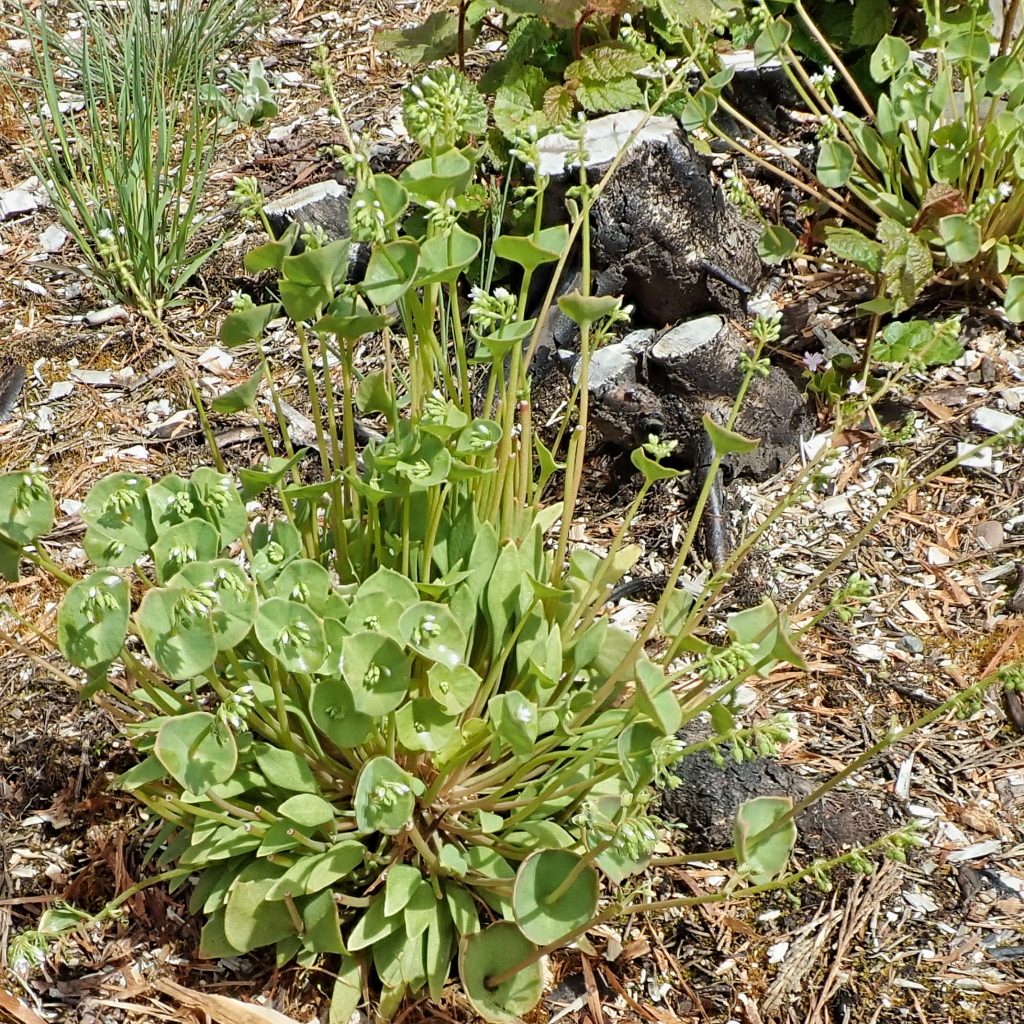
Reproductive timing-March to June
Eaten by-Larval host for the moths Annaphila diva, A. arvalis, and Enchoria lacteata ; valuable early season nectar and pollen source for various pollinators; Gastropoda and most grazing animals feed on these plants. Many birds and small mammals feed on the seeds.
Etymology of names–Claytonia honors John Clayton (1694-1773), a lawyer and botanist in colonial Virginia. The specific epithet parviflora is from the Latin for ‘little flower’, and probably refers to the tiny flowers of this species, although they are not any smaller than the flowers of any other member of this complex.
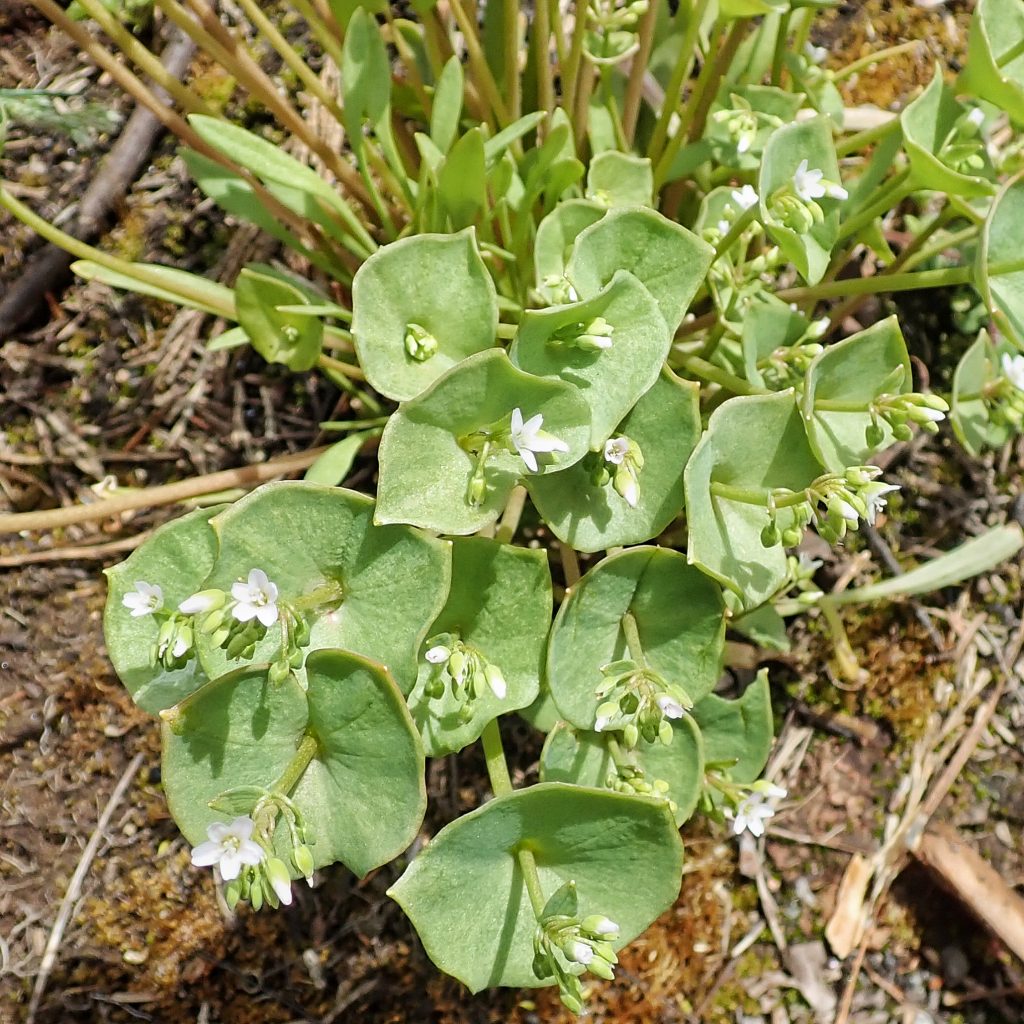
https://www.jstor.org/stable/2418301
http://www.efloras.org/florataxon.aspx?flora_id=1&taxon_id=242415740
http://biology.burke.washington.edu/herbarium/imagecollection/taxon.php?Taxon=Claytonia%20parviflora
https://en.m.wikipedia.org/wiki/Glossary_of_leaf_morphology
John Clayton herbarium | Natural History Museum
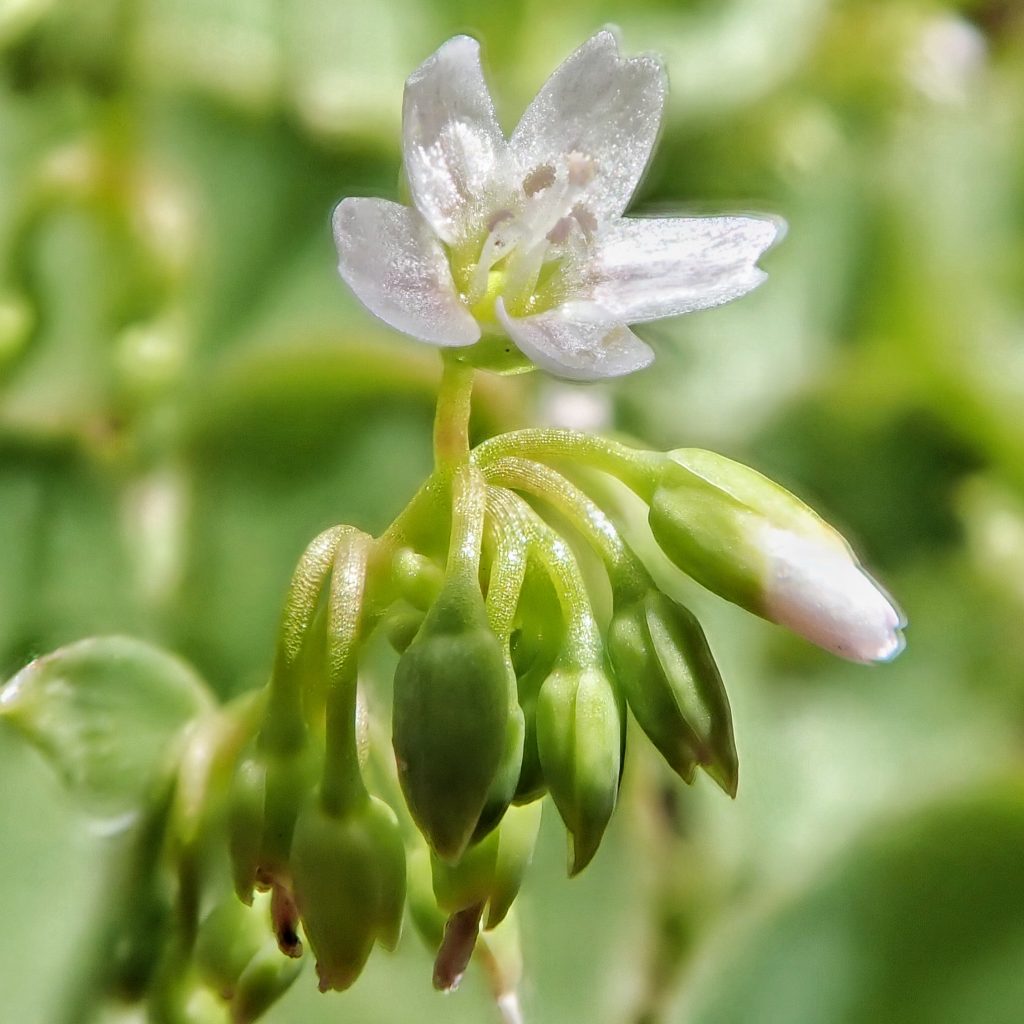
2 thoughts on “Claytonia parviflora”